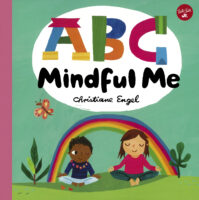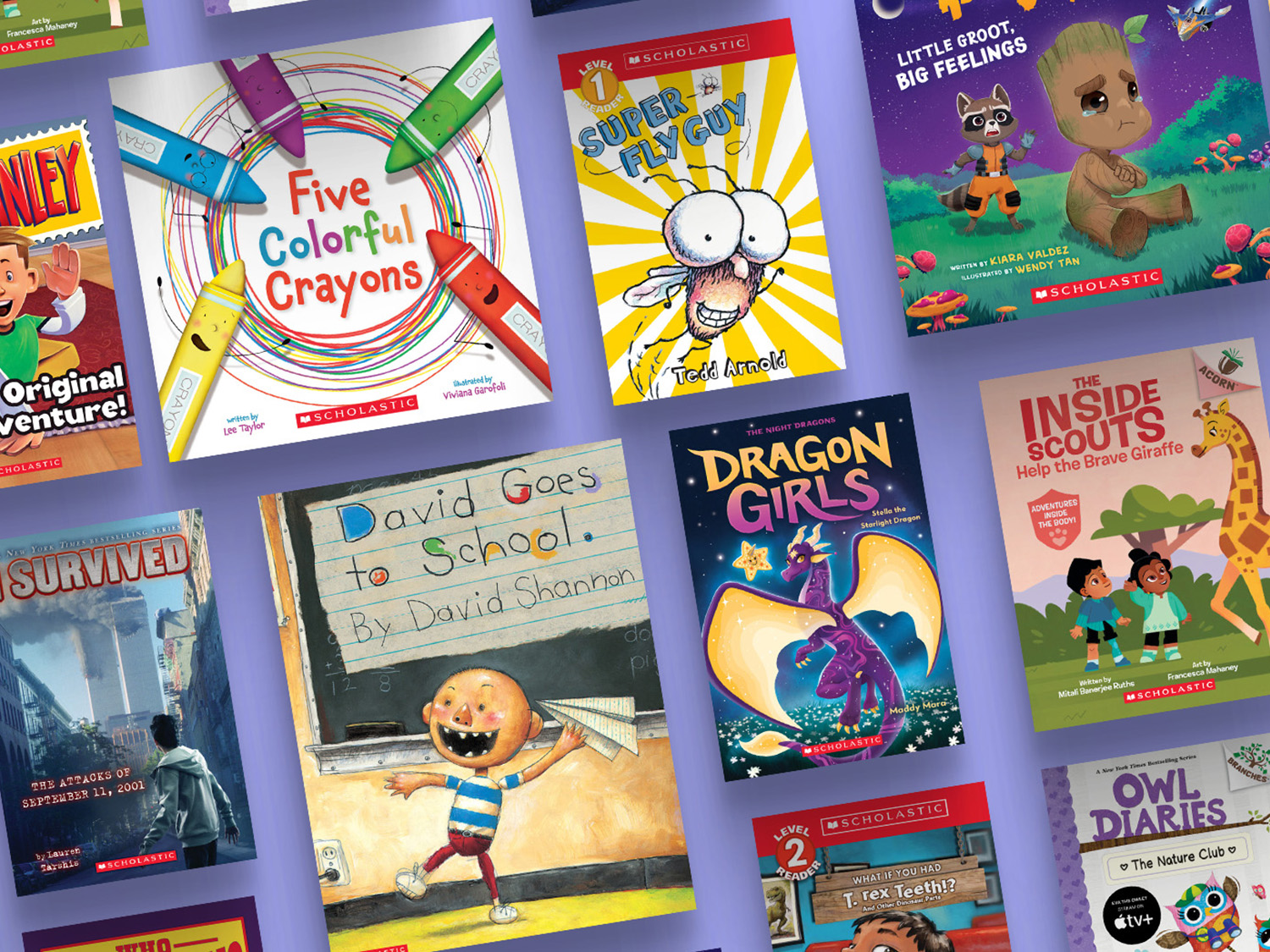5 Morning Mindfulness Activities for Students
Use these books and mindfulness exercises to help your students stay focused and calm throughout the day
Teaching mindfulness to your students can have a positive impact on their daily life and overall wellbeing. Mindfulness activities, like guided meditations and breathing exercises, can help reduce stress, enhance focus, and harness positive energy.
Here are some great mindfulness activities for students that will greatly benefit their social-emotional skills and academic performance during brain breaks or any time of the day.
Mindful Breathing Exercises
Breathing techniques are key to an effective mindfulness practice. Certain breathing exercises can help your students tap into their parasympathetic nervous system, which is the part of the nervous system that helps the body relax and remain calm when stress strikes.
Try this mindfulness breathing exercise: Ask your students to sit still and close their eyes. Have them take three deep breaths slowly, concentrating on the physical sensations of breathing in and out. With each deep breath, your students can focus on the present moment and ease tension in their bodies.
Belly Breathe has a wealth of breathing exercises that your students can use for different high-pressure situations.
Guided Class Meditation
Mediation is a powerful way to begin the day and can be done in a classroom setup. Meditation promotes mindfulness by helping individuals practice more self-awareness and focus.
Guide your students through a simple, five-minute meditation by playing peaceful music in the background and having your students sit with their backs upright and their hands on their desks or laps. Then, take a few calming breaths: breathe in deeply for three seconds and exhale for three seconds.
Next, choose a theme you’d like the class to focus on, such as what a good day at school would look like for them. Have your students visualize elements of their ideal school day, then ask them what they can do to make their day productive and happy, and what they can each do to help their friends and classmates do the same.
ABC, Mindful Me is a great mindfulness training resource that’s filled with guided meditations taught through colorful illustrations and easy-to-follow concepts.
Write Together
Journaling is one of the best ways to practice mindfulness daily. In fact, writing and reading make for great brain breaks! Writing about your feelings — whether it’s for a guided prompt or just freeform — promotes good mental health for students of all ages, from elementary to middle school.
As one of your mindfulness practices, devote 5 to 10 minutes before lessons in the morning to journal. This activity not only helps your students set a positive tone for the day, but it’s also a good opportunity for them to practice their vocabulary and spelling skills.
You can even create a daily mindfulness exercise, where students can pull ideas out of a mindfulness jar. Ask your students to write one thing that helps them feel better throughout the day; some examples are doing yoga, breathing, practicing gratitude, hugging a friend — anything that helps them stay zen — and place these ideas into the jar. Students are welcome to pull ideas out of the jar whenever they need a boost.
Zen Shorts is a collection of stories about enlightenment taught by a lovable, peaceful panda neighbor. Use this book to share meaningful lessons about gratitude, mindfulness, and the value of expressing emotions with your class.
Practice Gratitude
Start each school day on a good note by asking students to share things they’re grateful for. This mindfulness exercise can be as simple as going around the room to ask each student what they’re grateful for or having them write it in their notebooks.
Practicing mindfulness can be a group effort: Create a bulletin board full of big and small things that each student is thankful for in their lives — their families, their pets, how the sunshine feels, their favorite books and movies — anything and everything counts! This display serves as a reminder to focus on the good things.
Peace Is an Offering is a great place to start when discussing gratitude. In this book, children will learn how to find beauty and appreciation in the small things, and how each of those things can bring them peace.
Challenge Your Students
Your students’ individual actions have a direct impact on the emotional wellbeing of others around them. With this in mind, ask your students what they can do to brighten their classmates’ days in small ways, then hold them to it.
Peace Week in Miss Fox’s Class tells the story of Miss Fox’s class doing just that. Share this sweet story with your students, then try it out!
When Esperanza finds a heart-shaped rock, she is reminded to be kind and forgiving. But when her work in the school play is flawed, will she remember to be kind to herself?
Mindful Day embraces the joy of living in the moment and gives children their first introduction to the life-changing skill of mindfulness.
Bucket Filling is easy, as easy as can be. You can fill a bucket all the way from A to Z. Join these happy boys and girls to see how you can make others happy and fill your bucket, too!
Peace is making new friends Peace is giving shoes to someone who needs them Peace is a growing garden Peace is having enough pizza in the world for everyone
The Peace Book delivers positive and hopeful messages of peace in an accessible, child-friendly format featuring Todd Parr's trademark bold, bright colors and silly scenes. Targeted to young children first beginning to read, this book delivers a timely and timeless message about the importance of tolerance.
A metaphor for empathy, Felix learns how his positive everyday interactions fill his bucket, leaving him and his friends feeling happy and fulfilled.
All kids have trouble getting a grip on their emotions sometimes, even young superheroes. What do superheroes do when they're sad, mad, frustrated, lonely, or afraid? What if they're having a bad day or don't get their way?
This tender picture book introduces children to the benefits of expressing their anxieties.
This rhyming guide to social skills is a good introduction for young children to the power of kindness. Includes helpful times and activities.
Based on an episode from the Apple TV+ series, Stillwater. In A Perfect Fit, Addy and Michael are building a go-kart for the neighborhood race, and Karl is super excited to help. But with his siblings covering most of the work, he finds himself without much to do. Feeling left out, Karl makes his way to Stillwater's garden, where the wise panda helps him see there may be a perfect job for him after all.
Zen Ties is a disarming story of compassion and friendship that reaffirms the importance of our ties to one another.
This lively leveled reader series builds social emotional awareness while building reading skills.
Peace is making new friends Peace is giving shoes to someone who needs them Peace is a growing garden Peace is having enough pizza in the world for everyone
A mystical fable that feels at once timeless and utterly of the present moment, Our Table is renowned, bestselling creator Peter H. Reynolds at his best. Exquisite, expressive watercolor tells a tender story, growing from monochrome into luscious, joyful color as Violet's family is reunited around the beloved table. An ode to traditions that unite families, Our Table brings readers together with a universal message of gratitude.
What is the proper way to ask Mr. Panda for doughnuts?
Patiently and politely, Mr. Panda asks the animals he comes across if they would like a doughnut. A penguin, a skunk, and a whale all say yes, but they do not remember to say "please" and "thank you." Is anyone worthy of Mr. Panda's doughnuts?





















